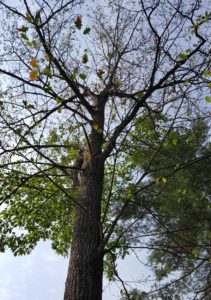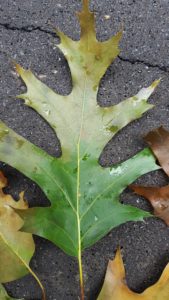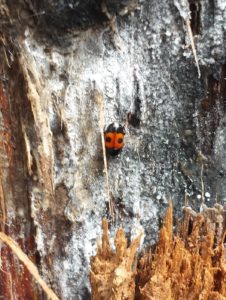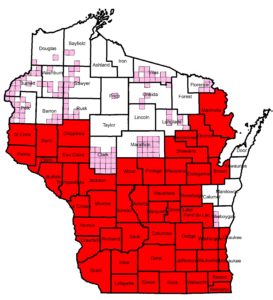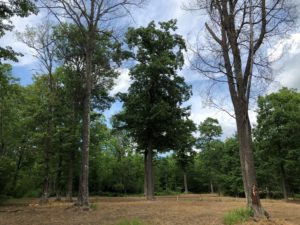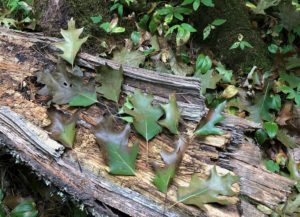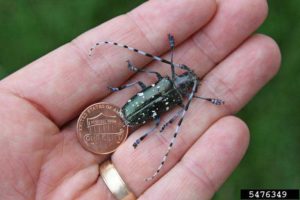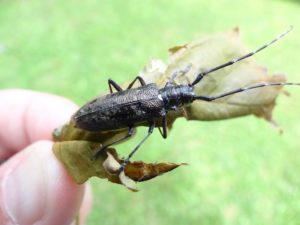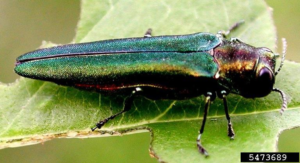By Don Kissinger, DNR urban forester (Wausau), Don.Kissinger@wisconsin.gov, 715-359-5793 and Paul Cigan, DNR forest health specialist (Hayward), Paul.Cigan@wisconsin.gov, 715-416-4920
To protect oak trees and help prevent oak wilt, the Wisconsin Department of Natural Resources advises people to avoid pruning oaks on their property from April through July.
Spring and early summer pruning makes oak trees vulnerable to oak wilt, a fatal fungal disease that rapidly kills trees in the red oak group and weakens those in the white oak group. Any tree damage during this time creates an opening that exposes live tree tissue and provides an opportunity for the oak wilt fungus to infect the tree.
The red oak group includes northern pin oak, northern red oak, red oak and black oak; the white oak group includes bur oak, swamp white oak, white oak and English oak.
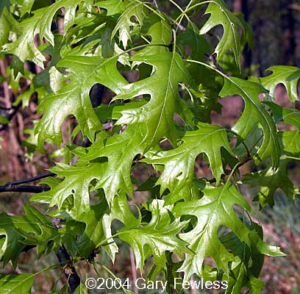
Pin oak (Quercus palustris)
Photo: Gary Fewless, University of Wisconsin, Green Bay
“It takes only a few minutes for beetles that carry oak wilt spores to land on a fresh wound and infect your tree,” said Paul Cigan, DNR forest health specialist in Hayward.
Property owners with oak trees are encouraged to check with their municipality to find out if there are local oak wilt ordinances which may have different pruning restrictions.
The use of tree paint or a wound dressing is not normally recommended on pruning cuts or wounded surfaces on most trees. But for damaged oaks, the use of such products are suggested from April through July. An immediate light painting of wounds or cuts on oak trees during this time helps protect against the spread of oak wilt by beetles.
Don Kissinger, a DNR urban forester in Wausau, said there are also other important reasons to avoid pruning many kinds of deciduous trees in spring beyond concerns about oak wilt.
“Spring is the time when tree buds and leaves are growing, leaving the tree’s food reserves low,” Kissinger said. In general, the best time to prune trees is in winter.
Oak wilt and other diseases move easily on or in firewood logs year-round. To protect trees in general, don’t move firewood long distances, or only use firewood labeled as Wisconsin-certified.
As of January 31, 2018, oak wilt has been found in all Wisconsin counties except Douglas, Bayfield, Ashland, Iron, Forest, Taylor, Door, Kewaunee, Calumet, and Manitowoc counties. Several of these counties contain the highest abundance of healthy and productive oak forests in the state. Taking recommended precautions with living oak trees and keeping firewood local to prevent the spread of oak wilt will help keep them that way for years to come.
More information is available online at the WI DNR website, including a recently released video on oak wilt. Visit the DNR website, https://dnr.wi.gov/, and search for “oak wilt” or “firewood.” Additional information about proper pruning techniques is available from community foresters or by searching for “tree pruning.”
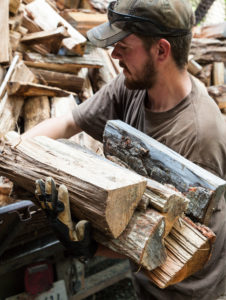 Continue reading “Fighting invasives together through responsible firewood practices”
Continue reading “Fighting invasives together through responsible firewood practices” 

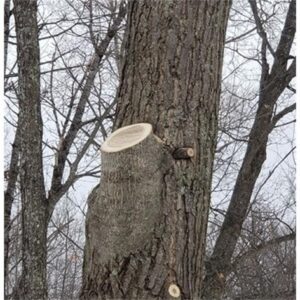 With the new year upon us, healthy lifestyle habits are sure to be on many people’s minds as they plan for changes in diet and exercise. The new year is also the perfect opportunity to make healthier choices for trees! Winter is the ideal time for tree pruning while avoiding harmful, disease-carrying pests such as the tiny beetles that carry oak wilt from one tree wound to another.
With the new year upon us, healthy lifestyle habits are sure to be on many people’s minds as they plan for changes in diet and exercise. The new year is also the perfect opportunity to make healthier choices for trees! Winter is the ideal time for tree pruning while avoiding harmful, disease-carrying pests such as the tiny beetles that carry oak wilt from one tree wound to another.
